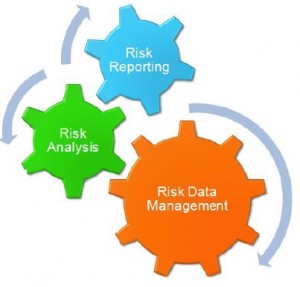“What [should we] look for in a risk aggregation solution?” asked Renzo Traversini, Director of Europe, the Middle East and Africa & Asia-Pacific, Risk Management Center of Excellence at SAS. He was the second of two speakers at a GARP-sponsored webinar to discuss the recently released Basel paper, Principles for Effective Aggregation and Reporting of Risk Data.
Traversini focussed on the “nuts and bolts” of how to aggregate and report risk data. SAS is one of the major suppliers of information technology (IT) solutions in financial risk management.
Timeliness is crucial to a good reporting system. Traversini began by showing how quickly counterparty risk for credit derivatives spiked during the 2008 financial crisis. Despite the speed of collapses, bank risk management committees all over the world experienced “an inability to meet the required timeline.” He noted that in 2009 the typical time for a bank to produce risk-weighted asset estimates on a monthly basis took approximately 20 days beyond the end-of-month plus 5 more days for manual adjustments.
The 2013 Deloitte study of bank risk management showed that “banks are challenged with current risk IT systems,” said Traversini. “The ability to collect a large set of data… is the result of complex connections within an institution,” he said. “It is organizational complexity, together with system capability limits, that creates time issues.”
An enterprise needs a fast, on-demand means to aggregate and explore risk, but the problem is there are “disparate data sources, formats, granularities, frequencies, quality, analytics, hierarchies, and stakeholders.”
“Timelines for filing the risk KPIs must be explicitly part of risk reporting standards within the enterprise,” Traversini said. The solution needs to have specific analytics within it. An overall solution “should be able to handle the nuances of each risk type,” thereby allowing the user to drill down to the specifics of any given calculation.
The risk reporting section of an IT solution “should include self-service visualization and reporting” so that the user “can compare information from multiple days side-by-side.”
Traversini stressed the importance of an enterprise having the capability to “look in” at the risk profile and said that the solution should be adaptable for intra-day or real-time reporting, even though that is not a regulatory requirement.
During the Q-and-A session, a member of the audience posed a question about the open-source software framework HADOOP. Traversini said there were many recent in-memory advances to make calculations faster. He noted that the financial crisis “made it clear that we must not just monitor but also quickly adjust the parameters being used.”
Underlining the “big picture” theme of the presentation, he concluded, “We take the perspective that the solution should be helpful to the enterprise, not just the answer to a regulation.” ª
Click here to return to Part 1. ª
The webinar presentation can be found at: http://event.on24.com/r.htm?e=699796&s=1&k=749171F66E3E96E3CD5FC6549BB83B0F
The SAS white paper concerning the above issue, in particular the data management part, can be found at: www.sas.com/resources/whitepaper/wp_65853.pdf


